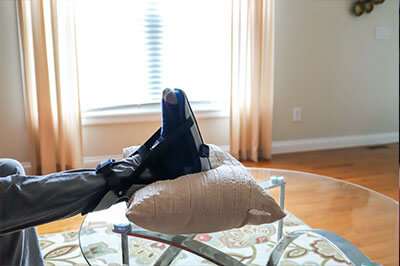
What is Custom Balance Bracing (AFO)?
An ankle-foot orthosis, or AFO, is a type of balance brace that is worn on the lower leg and is designed to address a number of lower leg/foot and ankle issues. AFOs are typically worn at the ankle and extend down and under the foot. They can sometimes go up on the leg as high as just below the knee. AFOs can be hinged at the ankle, or may be in a fixed position.
AFOs control the range of motion in the ankle and foot. They support and align the feet and ankles optimally to help make walking easier as well as improving the standing position. AFOs stabilize joints, reduce the risk of falling by improving balance, and can help support and strengthen weakened muscles or lengthen and loosen tight muscles. AFOs can also be used to help correct deformities, reduce pain, and help a patient return to activity after a period of immobility.
The types of podiatric conditions an AFO, or balance brace, can address include foot drop, trauma, Charcot Marie Tooth (CMT), nerve damage, idiopathic toe walking, partial foot amputation, impaired musculature due to arthritis or a stroke, and more. They are also used to improve mobility and stabilize the lower extremities in patients with muscular dystrophy, ALS, spinal cord injuries, cerebral palsy, and more.
What are custom AFOs made of?
Modern, custom AFOs are made of different materials such as polypropylene (plastic), carbon-fiber, metal, or a hybrid of polypropylene and canvas. AFOs come in different types and sizes. Your podiatrist will examine you and determine what type of AFO is appropriate for your condition, individual musculature, medical history, and primary pathology. They will make any adjustments and modifications to your AFO and also advise you on the type of shoes you can wear with your AFO. Footwear should be sturdy and supportive. Your podiatrist will also instruct you on how to maximize the comfort and efficiency of your orthosis and demonstrate how to put the device on. You will be urged to wear socks long enough to make sure your skin has no direct contact with the orthosis.
If you have any questions about ankle-foot orthoses, ask your podiatrist.
